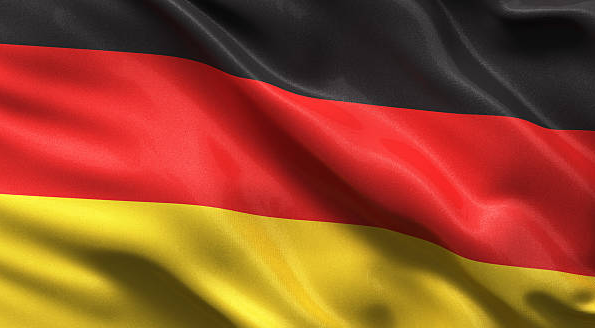Let’s have a look at the Ecuador National Flag. Ecuador, a country of diverse cultures and rich history, boasts a national flag that encapsulates the nation’s identity and heritage. In this comprehensive article, we will delve into the Ecuador National Flag, exploring its historical significance, design, symbolism, and much more.
Historical Background
The history of the Ecuadorian flag dates back to the early 19th century when Ecuador was part of the Gran Colombia. On September 26, 1860, Ecuador officially adopted its national flag. This adoption was a significant step toward solidifying the country’s identity during a time of political change.
Ecuador National Flag: Design and Symbolism
The Ecuador National Flag consists of three horizontal bands of colors – yellow, blue, and red. Each of these colors carries its own unique symbolism. Yellow represents the country’s abundance and fertility, a tribute to Ecuador’s fertile land and prosperous agriculture. Blue symbolizes the vastness of the Pacific Ocean that borders Ecuador and the limitless opportunities that lie ahead. The color red signifies the valor and bloodshed of those who fought for independence, a poignant reminder of the sacrifices made during Ecuador’s battle for freedom.
Colors of the Flag
Understanding the specific shades of yellow, blue, and red used in the flag is crucial. The precise hues have been defined in the Ecuadorian national law, ensuring consistency in flag production and display. The yellow is Pantone 116C, the blue is Pantone 286C, and the red is Pantone 186C.
Evolution of Ecuador National Flag
Over the years, the Ecuadorian flag has seen some changes. It’s essential to explore the flag’s evolution and the reasons behind alterations in design and symbolism. For instance, the flag underwent variations during the turbulent period of Ecuador’s history in the 19th century, reflecting political shifts.
Flag Etiquette
Ecuadorians hold their flag in high regard and have established a set of rules and etiquette when handling the national emblem. These customs are deeply ingrained in their culture. For example, it’s customary to salute the flag during the national anthem and show utmost respect when hoisting or lowering it.
Importance of the Flag
The Ecuador National Flag holds immense significance for the country and its people. It serves as a unifying symbol, reminding Ecuadorians of their shared history and values. The flag is not just a piece of cloth; it’s a representation of the collective spirit and aspirations of the nation.
Ecuadorian Independence and the Flag
The flag played a pivotal role during Ecuador’s struggle for independence from Spanish colonial rule. It was a symbol of hope and determination that inspired the revolutionaries. In 1830, when Ecuador officially gained its independence, the flag took on a new level of importance, becoming a powerful emblem of sovereignty.
Variations of the Flag
While the national flag maintains its standard design, various regional and municipal flags exist. These flags often incorporate the national colors but feature distinct elements that represent the local culture. This reflects the diversity within the country, as each region has its unique traditions and heritage.
National Holidays and the Flag
Ecuadorians proudly display their flag during national holidays, such as Independence Day on August 10. It’s a time of celebration and patriotism, where the flag is prominently featured in parades, events, and decorations throughout the country.
Displaying the Flag
Learn how to properly display the Ecuadorian flag, whether it’s in your home, a government building, or a public event. Adhering to the correct guidelines is essential. The flag should be hoisted from sunrise to sunset, and it should be illuminated if displayed at night. When displayed alongside other flags, the Ecuadorian flag should be at the same height or higher.
Flag in Education
The flag is an integral part of the Ecuadorian education system. Students learn about its history, significance, and the values it represents. In schools across Ecuador, raising the flag and singing the national anthem is a daily ritual, reinforcing a sense of national identity.
References to the Flag in Art and Literature
The Ecuadorian flag has inspired artists, poets, and writers for generations. Explore its presence in the country’s art and literary works, where it symbolizes patriotism, unity, and the beauty of Ecuador’s landscapes. It has also been featured in numerous paintings, poems, and novels, showcasing its cultural impact.
FAQs about the Ecuador National Flag
- What do the colors of the Ecuadorian flag represent?
The yellow symbolizes abundance and fertility, the blue represents vastness and opportunity, and the red signifies valor and the struggle for independence.
- When was the current design of the Ecuador National Flag adopted?
The current design was officially adopted on September 26, 1860.
- Are there any specific rules for flag display in Ecuador?
Yes, there are guidelines for displaying the flag, particularly during national holidays and events, to ensure it is treated with respect and honor.
- How has the flag evolved over the years?
The flag has seen some changes in its design and symbolism, reflecting historical shifts and political transformations.
- What is the significance of the flag in Ecuadorian education?
The flag is a fundamental part of education, teaching students about national identity, unity, and the values it represents, fostering a strong sense of patriotism.
Conclusion
The Ecuador National Flag is more than just a piece of cloth; it is a symbol of Ecuador’s history, culture, and aspirations. As a country expert, I hope this article has provided you with a comprehensive understanding of the Ecuador National Flag. It’s a symbol of unity, pride, and the rich history of this beautiful South American nation.
References
- “National Flag of Ecuador,” Ecuadorian Government. https://www.gobiernodelecuador.ec/
- “Flag and Emblem Law of Ecuador,” National Assembly of Ecuador. https://www.asambleanacional.gob.ec/
- “Ecuador’s Struggle for Independence,” Britannica. https://www.britannica.com/place/Ecuador
- “Ecuadorian Culture and Traditions,” Ministry of Tourism of Ecuador. https://www.vivecuador.com/
- “Art and Literature in Ecuador,” Ecuadorian Ministry of Culture. https://www.culturaypatrimonio.gob.ec/
Featured Image Credits: rawpixel.com/freepik


